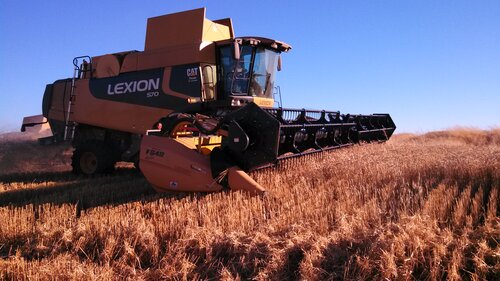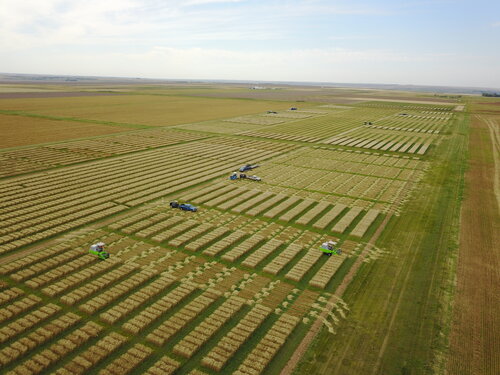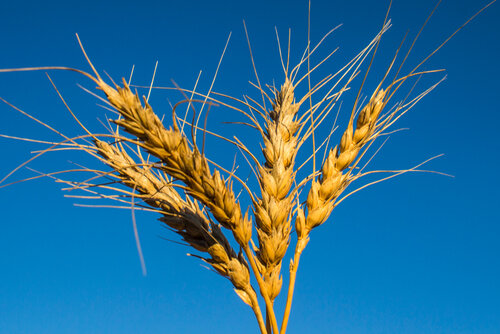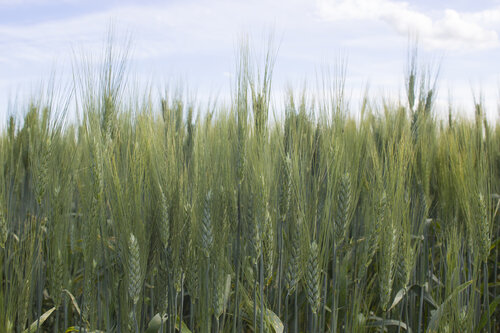Improving Yield, Yield Stability, and Grade Protection in Western Canadian Spring and Durum Wheat Cultivars – An Integrated Approach
In wheat breeding, there are three pillars, says Pierre Hucl, wheat breeder with the Crop Development Centre (CDC), University of Saskatchewan. He and his colleagues are developing spring and durum wheat varieties for Western Canada with targets in each of these pillars:
-
improved yield
-
good disease resistance package
-
end-use quality characteristics requested by export and domestic customers
Their aim was to increase yield by 6.5% over the 2016 check. Hucl says they’ve developed both spring and durum wheat varieties that are yielding at least 10% higher, while maintaining other favourable agronomic traits and most of the disease resistance they were looking for.
“I think we’ve already met that objective in Canada western red spring wheat,” says Hucl. His CDC SKRush, which is yielding about 15% higher than the checks in registration, will be available in fall 2022 through SeCan.
To accelerate the release of new varieties, Hucl’s team used some of the Canadian Agricultural Partnership (CAP) Wheat Cluster funding they received to increase the size of their winter nursery. Typically breeders in Canada can only plant one crop per year, so most grow a second generation in the southern hemisphere (often New Zealand or Chile) in the winter.
Breeders also rely on disease nurseries, where they induce disease to test the resistance of new material. Hucl’s team used some of their CAP Wheat Cluster funding to double the size of their Fusarium head blight (FHB) nursery and improve their stripe rust nursery. This aspect of their project was managed by Randy Kutcher, plant pathologist, CDC.
“We’ve been able to set up a physically distanced stripe rust nursery,” Hucl says. “We used to have our leaf rust and our stripe rust nurseries together, but it can be a challenge to differentiate between the two.”
One of the most challenging diseases is Fusarium head blight (FHB). “It’s been a bugbear for us for a quarter century now and overcoming it has been a slow, slow process,” he says. “We’ve doubled our FHB resistance, but we’re still not where we’d like to be.”
Disease resistance in crops tends to break down over time because the pathogens mutate. “For something like leaf rust or stripe rust, the resistance only lasts about a decade, and then you’re back at square one,” he says. “So we try to combine as many genes for resistance as we can in each variety. If one goes down, the others will hold up.”
One of the most important developments in their arsenal of wheat breeding tools has been the breeder chip. Developed as part of a 10-year project to sequence the wheat genome (led by Curtis Pozniak, wheat breeder and CDC director), the breeder chip uses more than 5,000 DNA markers to target specific genes. This helps breeders more accurately select for specific traits (such as yield and disease resistance) and predict the performance of breeding lines. It doesn’t shorten the breeding process, but it makes the outcomes more predictable.
“The breeder chip has been an international effort to identify all the key markers,” says Hucl. “The process probably started 10 years ago, but it’s been getting cheaper and cheaper to deploy, and we’re identifying more and more useful markers.”
Hucl’s third and final pillar is dough strength improvement for end users. He says breeders have been given new targets for dough strength, essentially meaning how elastic the dough produced from a wheat will be. The test used to determine dough properties is very time consuming and the equipment (an extensograph) is very expensive. Michael Nickerson (Department of Food and Bioproduct Sciences, University of Saskatchewan) is trying to develop a quicker and easier predictive test to determine extensibility.
“If we can get a rapid test to work, it will be a benefit not only to our breeding program, but also to other Western Canadian wheat breeding programs,” says Hucl.
This Wheat Cluster project received funding from Agriculture and Agri-Food Canada through the AgriScience Program, which is part of the Canadian Agricultural Partnership, a federal, provincial, territorial initiative. This project also received funding from Alberta Wheat Commission, Saskatchewan Wheat Development Commission, Manitoba Crop Alliance, and Western Grains Research Foundation.
To read the project profile, CLICK HERE.






